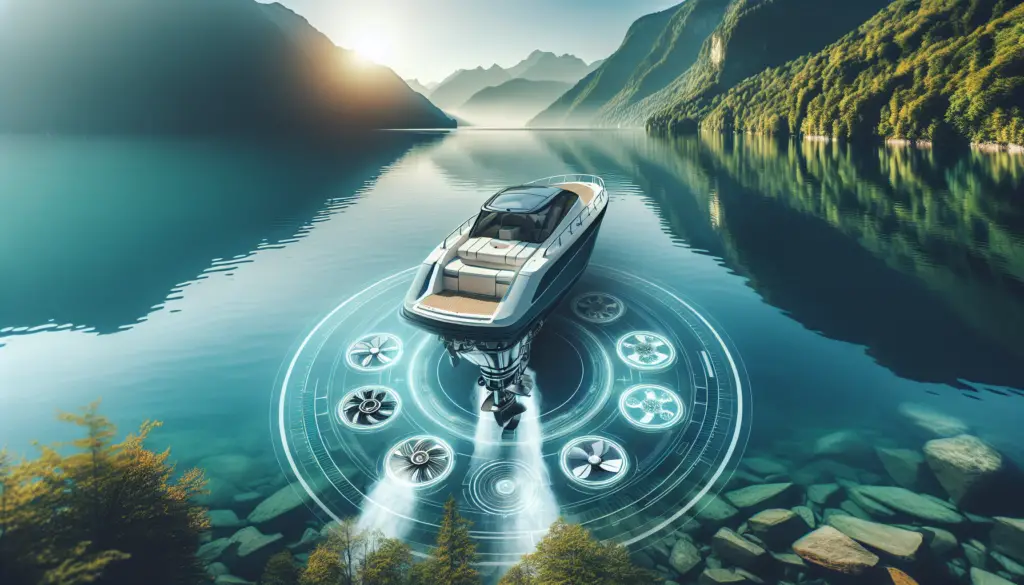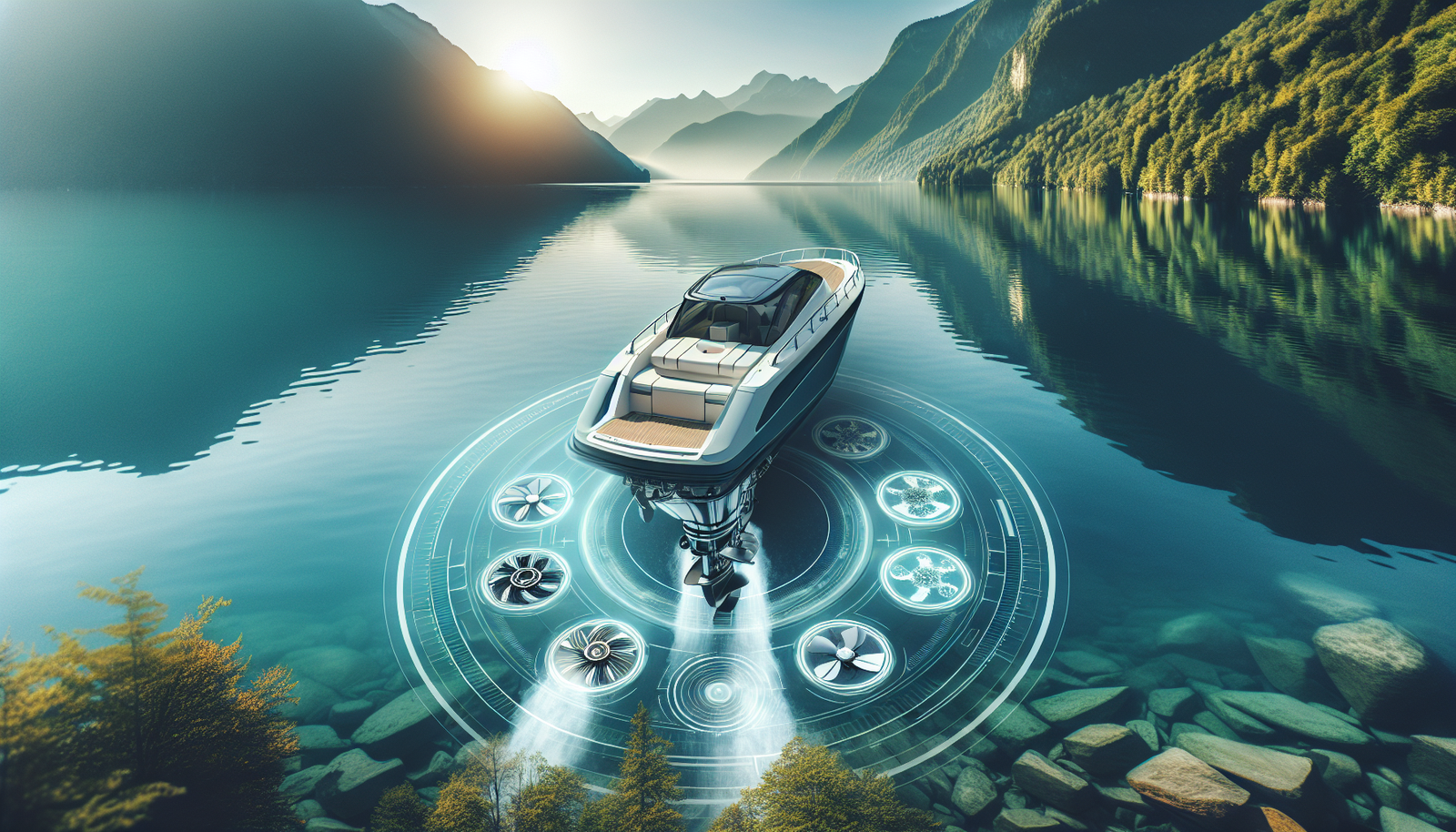Imagine yourself an eco-conscious sailor, always on the lookout for ways to make your seafaring adventures kinder to Mother Nature. In the world of marine transportation, a transformative change is underway — a clean-energy revolution aiming at minimizing the carbon footprint of nautical journeys. The “Innovations in Eco-Friendly Propulsion Systems for Boats” explores this incredible transition, dealing with cutting-edge, planet-friendly technologies that promise to alter the way we propel our boats. So sail along as we navigate through the sea of change towards greener horizons.

Understanding Propulsion Systems
You’ve likely heard the term propulsion system before, particularly if you’ve been around boats or any other kind of vehicle really. But what does that term mean exactly?
Definition of Propulsion Systems
In the simplest of terms, a propulsion system is the mechanism that drives a vehicle forward. This can be a car, a boat, an airplane, or even a spacecraft. The propulsion system generates a force that, when applied, moves the vehicle through its environment – be it water, earth, or space.
Basic Types of Propulsion Systems
There are several types of propulsion systems, each defined by the kind of energy they use to create motion. Some common ones you might have heard of include internal combustion engines (think of the engine in your car), jet engines (like those on an airplane), or rocket engines (used in spacecraft). Each of these engines has its own specific applications and use cases.
Historical Overview of Marine Propulsion
Marine propulsion systems have evolved significantly throughout history – from humble oars and sails to complex mechanical engines. The first recorded marine propulsion system dates back to ancient times when oars were used to move ships through water. However, the invention of steam-powered engines in the 1800s marked a significant step forward in marine propulsion. Today, most ships utilize some form of internal combustion engine, often diesel, for propulsion.
Need for Eco-Friendly Propulsion Systems
In recent years, there’s been a growing concern over the environmental impact of conventional propulsion systems. This concern has resulted in a push for more sustainable and eco-friendly alternatives.
Environmental Implications of Conventional Propulsion Systems
Conventional marine propulsion systems, particularly those relying on internal combustion engines, pose significant environmental challenges. They burn fossil fuels, leading to the emission of harmful pollutants such as carbon dioxide, nitrogen oxides, and sulfur oxides. These emissions contribute to global warming and also have detrimental impacts on air quality and public health.
Regulations and Standards Prompting Change
Increasing environmental concerns have led to the enforcement of stricter emission standards and regulations worldwide. For instance, the International Maritime Organization has established limits on sulfur emissions from ships. Such challenges are pushing the marine industry towards more environmentally friendly propulsion technologies.
Benefits of Eco-Friendly Propulsion Systems
Eco-friendly propulsion systems not only help in curbing pollution but also offer numerous other benefits. They often lead to improved fuel efficiency, leading to significant cost savings over time. Plus, using renewable energy sources reduces dependency on fossil fuels, thereby enhancing energy security.
Achieving Sustainability in Marine Transport
Achieving sustainability in marine transport requires a multi-faceted approach. It’s about shifting to cleaner fuels, adopting more efficient propulsion technologies, and improving the overall operational efficiency of the ship. Innovations in eco-friendly propulsion systems are a critical part of this puzzle, holding the potential to revolutionize the marine industry.

Hybrid Propulsion Systems
Hybrid propulsion systems combine two different power sources, usually an internal combustion engine and an electric motor.
Working of Hybrid Propulsion
In a hybrid system, the engine and motor can work independently or together, depending on the circumstances. This setup allows for greater efficiency and flexibility.
Advantages of Hybrid Propulsion Systems
Hybrid systems offer a variety of advantages. They emit less pollution, make for quieter operation, and can be more fuel-efficient. They also offer a level of redundancy – if one system fails, the other can take over.
Case Studies: Use of Hybrid Propulsion in Boating
There are several examples of successful application of hybrid propulsion in boating. For instance, hybrid ferries operating in various parts of the world have reported significant reductions in fuel consumption and emissions. Similarly, many luxury yachts now feature hybrid propulsion for quieter and cleaner operation.
Electric Propulsion Systems
Over the past decade, electric propulsion has emerged as a promising alternative to traditional combustion engines, especially in the marine sector.
Overview of Electric Propulsion
Electric propulsion systems work by converting electrical energy into mechanical energy. In most cases, this is achieved by using electric motors connected to propellers or thrusters.
Types of Electric Propulsion Systems
Common types of electric propulsion systems include battery-electric and hybrid-electric systems. Battery-electric propulsion relies solely on energy stored in batteries, while hybrid-electric systems combine battery power with a combustion engine or generator.
Pros and Cons of Electric Propulsion
Electric propulsion offers several significant advantages. It’s highly efficient, produces zero local emissions, and operates quietly. However, it does come with a few challenges, most notably the limited energy density and lifespan of batteries, and their long charging times.

Solar Powered Propulsion Systems
Solar power offers a clean and renewable source of energy for marine propulsion.
Understanding Solar Propulsion
Solar propulsion works by harvesting energy from the sun using solar panels. This energy is converted into electricity which is used to power electric motors that drive the boat’s propellers.
Advancements in Solar Panel Technology
Significant advances in solar panel technology in recent years have made solar propulsion more viable. Newer solar panels are more efficient, durable, and flexible, making them more suitable for marine environments.
Challenges and Solutions in Solar Propulsion
While promising, solar propulsion does have its challenges. These include the intermittent nature of solar energy and the large surface area needed for solar panels. However, solutions like improved energy storage and hybrid systems help overcome these challenges.
Hydrogen Fuel Cell Propulsion Systems
Hydrogen fuel cells offer an exciting potential for marine propulsion.
Understanding Hydrogen Fuel Cells
Hydrogen fuel cells generate electricity by combining hydrogen and oxygen in a chemical reaction. The only byproduct from this process is water, making it extremely clean.
Benefits and Drawbacks of Hydrogen Fuel Cell Propulsion
Fuel cells are efficient, clean, and operate silently. However, they do suffer from practical issues like the storage and sourcing of hydrogen. While significant progress has been made in these areas, they remain key challenges to their widespread adoption.
Future Prospects of Hydrogen in Marine Propulsion
Despite the challenges, the potential of hydrogen in marine propulsion is massive. In the future, it’s likely we’ll see more boats and ships powered by hydrogen, especially as the technology matures and becomes more economical.

Wind Propulsion Technologies
Wind has been used for propulsion for thousands of years, and new technologies are giving it a fresh lease of life.
History and Revival of Wind Propulsion
Sailing was the primary method of marine travel for much of human history. While the advent of engines led to a decline in its use, rising environmental concerns are driving a revival of wind propulsion.
Modern Advances in Wind Propulsion
Modern wind propulsion technologies are far more advanced than traditional sails. Techniques like kite sails, rotor sails, and wing sails can provide significant fuel savings and reduce emissions.
Wind Propulsion for Large and Small Vessels
Wind propulsion isn’t just for small boats. Large vessels, including cargo ships, are starting to utilize wind technologies to lower their environmental footprints.
Biofuel-Based Propulsion Systems
Biofuels represent another sustainable alternative for marine propulsion.
Introduction to Biofuels
Biofuels are produced from organic matter, like plant or animal waste. They can be used in conventional engines without requiring significant modifications, making them a practical option for many vessels.
Use of Biofuels in Marine Propulsion
Several marine operators have started utilizing biofuels to reduce their emissions. While biofuels currently come at a premium, their cost is projected to decrease significantly as production scales up.
Availability and Sustainability of Biofuels
While biofuels offer a lot of potential, there are concerns around their availability and sustainability. The production process needs to be carefully managed to ensure it doesn’t negatively impact food supply or lead to deforestation.
Air Lubrication Propulsion Systems
Air lubrication is a novel approach to reducing resistance and improving efficiency in marine propulsion.
Understanding Air Lubrication
Air lubrication works by pumping air bubbles onto the hull of a ship. This creates a thin layer of air between the hull and the water, reducing friction and thus increasing efficiency.
Benefits of Air Lubrication in Propulsion
The reduced friction from air lubrication can result in significant fuel savings. Moreover, the technology can be retrofitted onto existing vessels, making it relatively easy to implement.
Implementation and Results of Air Lubrication Systems
Several operators have implemented air lubrication systems with positive results. For instance, shipping giant Maersk reported a 10% reduction in fuel consumption on a vessel equipped with an air lubrication system.
Trends and Future of Eco-Friendly Propulsion Systems
The trajectory of marine propulsion is undoubtedly shifting towards more sustainable technologies.
Role of Innovation and Technology
Innovation and technological advancement play key roles in this transition, enabling more efficient and practical solutions.
Potential Developments in Propulsion Systems
In the coming years, we can expect to see further developments in marine propulsion systems, from advances in electric and hydrogen technologies to novel approaches like wave and tidal energy.
Contributing Factors to the Adoption of Eco-Friendly Systems
Several factors are promoting the adoption of eco-friendly systems including stricter regulations, growing public awareness and improving economics of sustainable technologies.
The Impact of Eco-Friendly Propulsion Systems on the Marine Industry
The shift towards eco-friendly propulsion systems is set to reshape the marine industry, bringing about cleaner seas, more efficient operations, and a wave of new opportunities. There’s no doubt – the future of marine propulsion is green.

